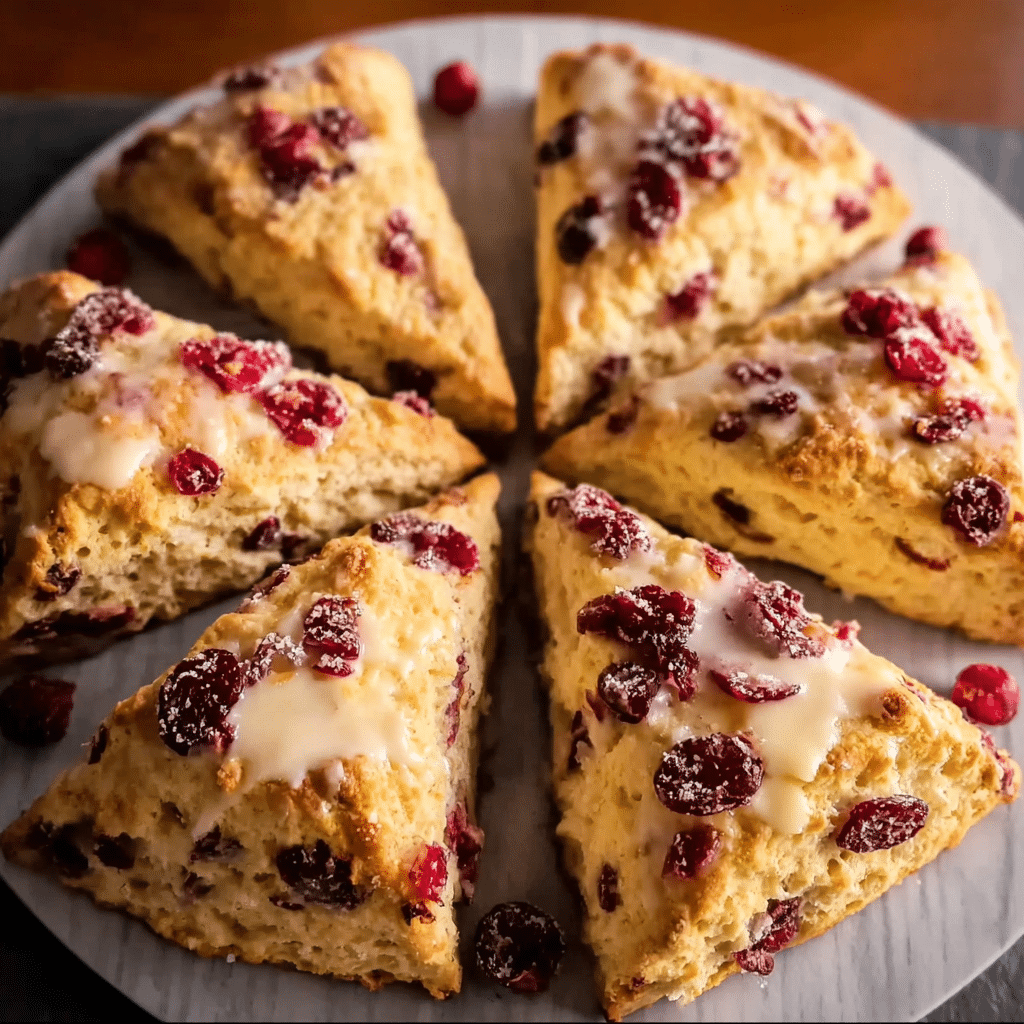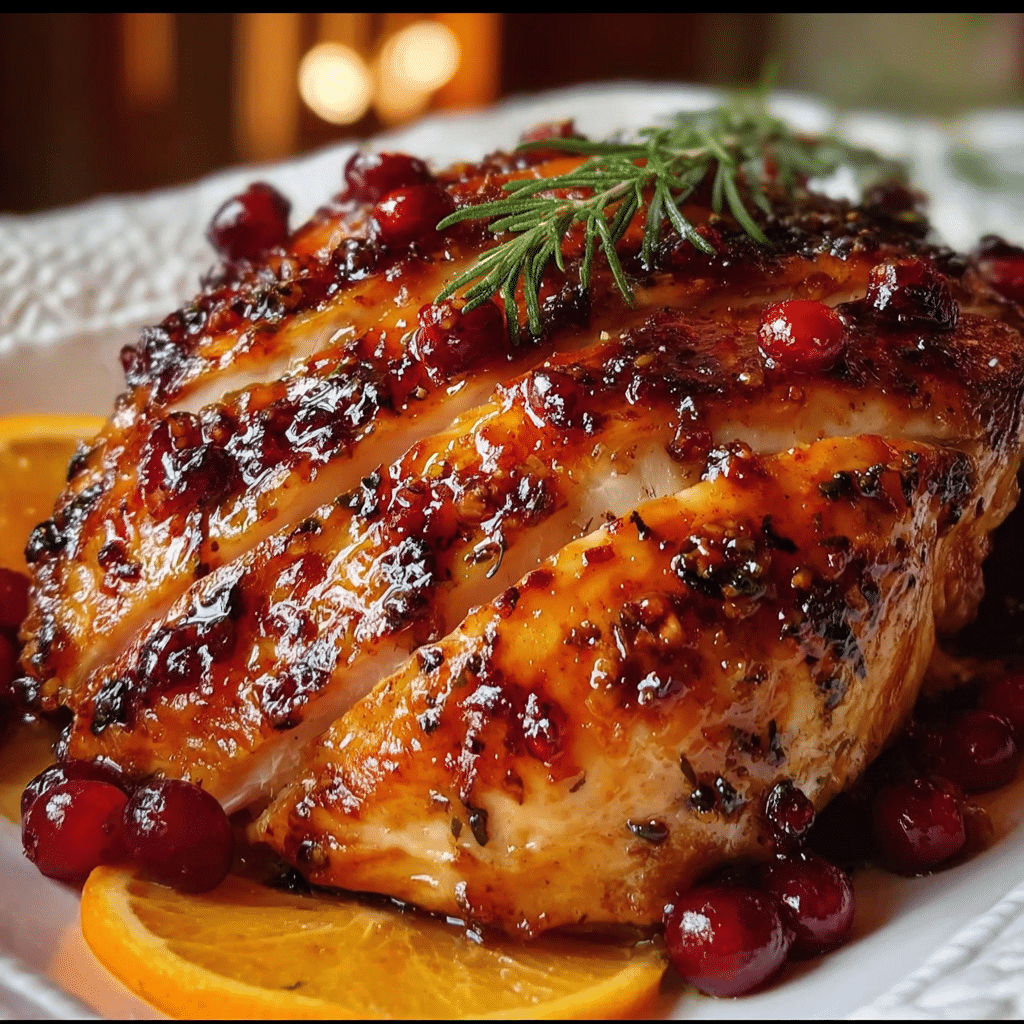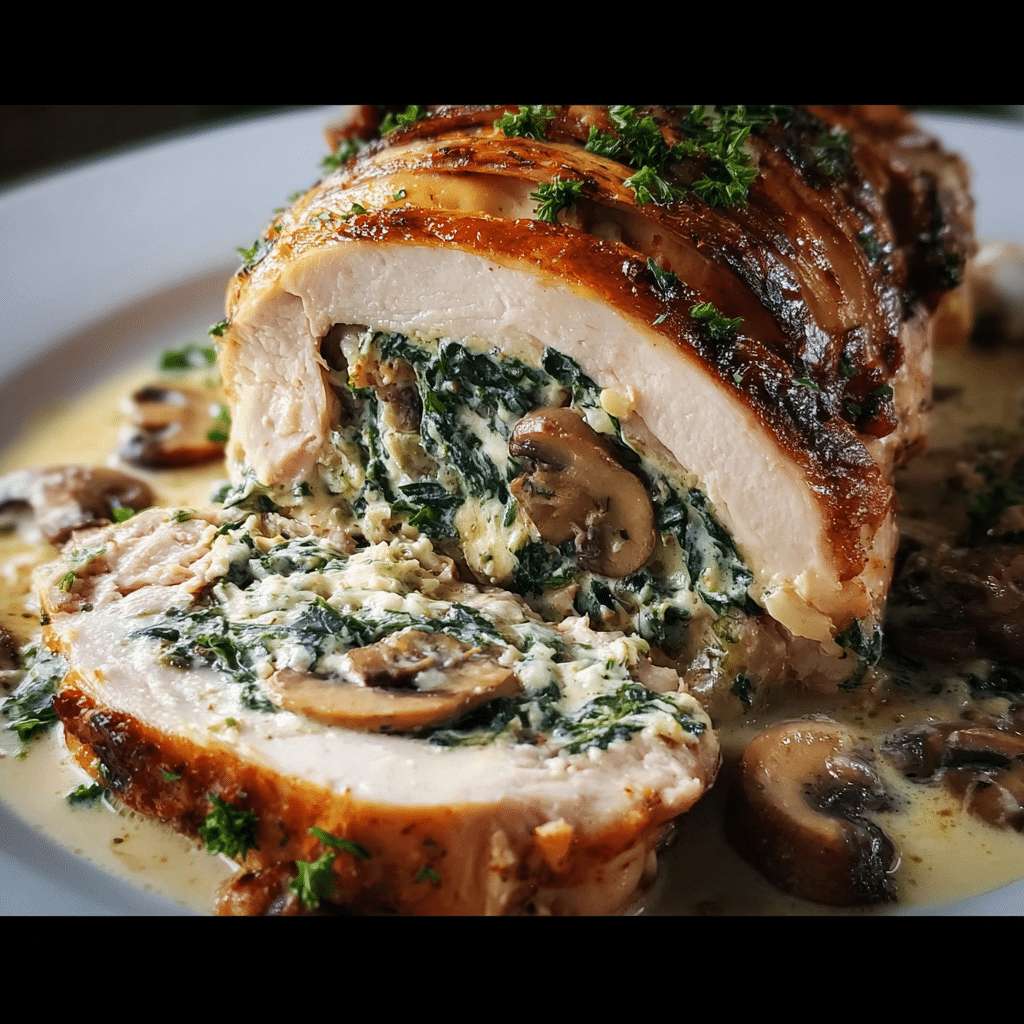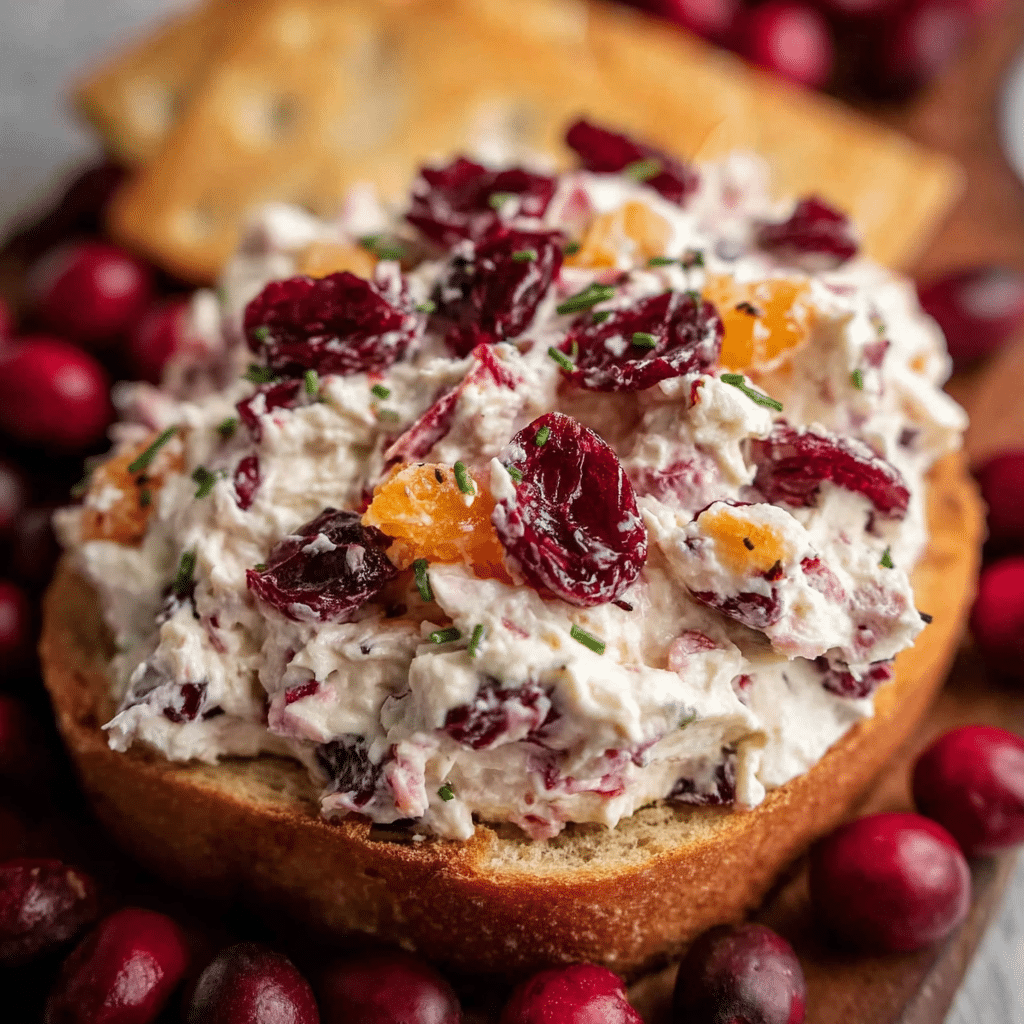Garlic herb butter is a culinary masterpiece that brings together the rich flavors of garlic and fresh herbs, creating a sumptuous experience that elevates any dish it accompanies. I first stumbled upon this delightful concoction during a cozy autumn dinner at my friend’s house. The aroma wafting from the kitchen was intoxicating, and as I entered, I was greeted by the sight of a golden-brown turkey, glistening with a buttery glaze. My friend, a passionate home cook, had generously slathered the turkey in her special garlic herb butter, and I was instantly hooked.
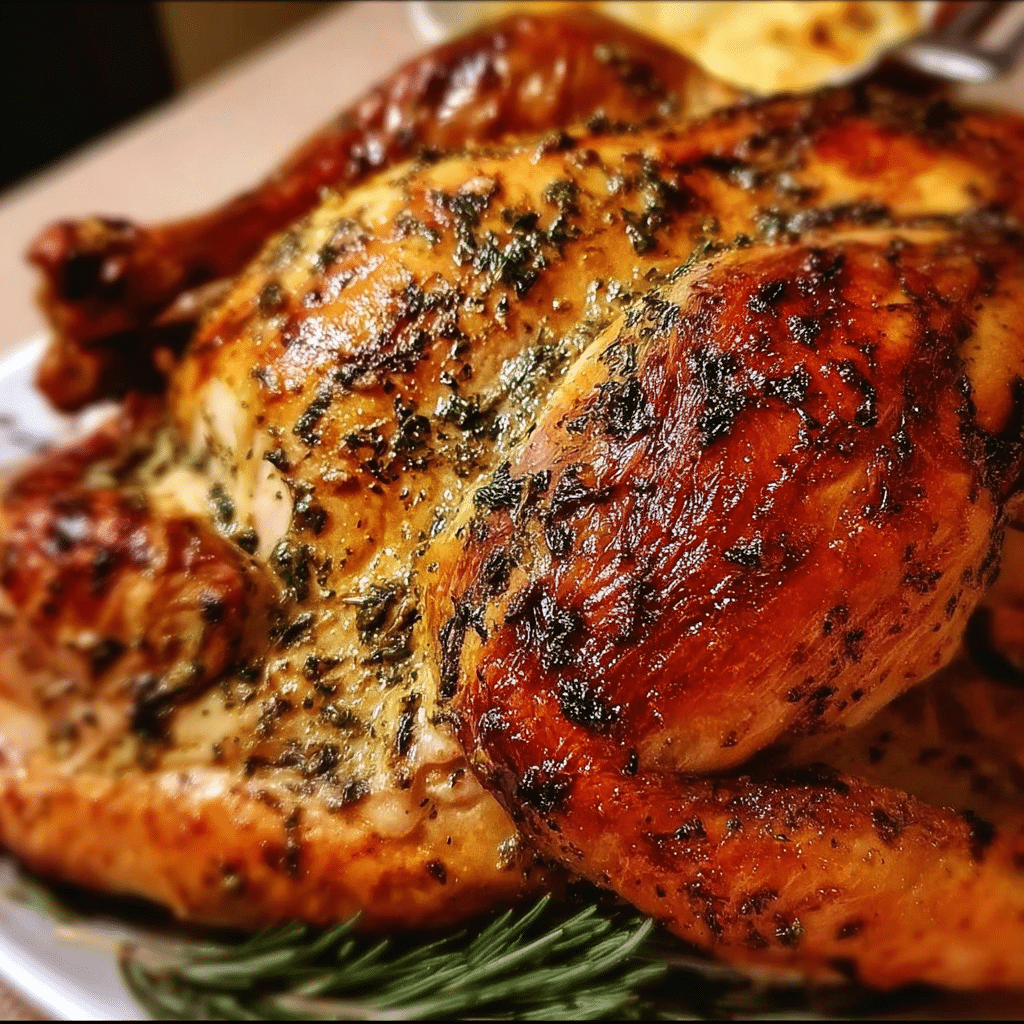
As we sat around the table, indulging in the tender, juicy turkey, she shared her secret—the garlic herb butter was not just a flavor enhancer, but a way to create memories with family and friends. Each bite was infused with the warmth of her kitchen and the love that had gone into preparing the meal. This moment marked the beginning of my own journey with garlic herb butter, as I realized how it could transform even the simplest of meals into something extraordinary.
The Story Behind This Recipe
The origins of garlic herb butter can be traced back to various culinary traditions around the world, with each culture adding its own twist to this versatile ingredient. In French cuisine, for instance, herb butters (or “beurre composé”) have been a staple for centuries, often used to enhance fish, meats, and vegetables. The French have mastered the art of blending quality butter with fresh herbs and garlic, creating a luxurious and flavorful experience that has become a hallmark of their cooking.
What makes this garlic herb butter roast turkey recipe truly special is how it marries these rich traditions with a modern twist that suits the busy lifestyles of families today. In a world where time is often scarce, this recipe stands out as a convenient solution for weeknight dinners or holiday feasts. Its simplicity allows anyone, no matter their cooking skill level, to create a memorable meal that will leave everyone asking for seconds.
With the holiday season approaching, garlic herb butter roast turkey becomes even more relevant. It’s a dish that brings people together, offering comfort and joy during family gatherings. The seasonal relevance is undeniable; as the leaves change color and the air turns crisp, the warmth of a roasted turkey infused with garlic herb butter creates an inviting atmosphere that beckons loved ones to the table.
Why You’ll Love This Dish
What I love most about garlic herb butter roast turkey is not just the flavor, but the emotional connection it fosters. It’s not merely a recipe; it’s a tradition that can be passed down through generations. I remember making this dish for the first time with my own family, laughing and sharing stories as we prepared it together. The garlic herb butter became a symbol of our time spent in the kitchen, each family member contributing their touch, whether it was chopping garlic, measuring herbs, or basting the turkey.
In this guide, readers will learn everything they need to know about making garlic herb butter roast turkey, from selecting the perfect turkey to crafting the garlic herb butter itself. I’ll share tips on how to infuse flavors, the best herbs to use, and even how to adapt the recipe for different occasions. This recipe promises not only to satisfy your taste buds but to create lasting memories that you’ll cherish for years to come.
The Rich History and Cultural Significance of garlic herb butter
The rich history and cultural significance of garlic herb butter stretch far beyond its delightful flavor profile. Garlic has been an integral part of cooking for thousands of years, revered not just for its culinary qualities but also for its medicinal properties. Its use can be traced back to ancient civilizations, where it was prized for its ability to enhance flavor and preserve food. The incorporation of herbs with garlic in butter is a practice that has evolved through various cultures, marrying health benefits with culinary art.
Origins and History
Garlic herb butter, or variations of it, can be found in cuisines worldwide. In Mediterranean cultures, garlic and herbs like parsley and thyme are frequently combined with olive oil or butter to create a base for many dishes. The French beurre maître d’hôtel, a simple mixture of butter, parsley, and lemon, closely resembles what we now know as garlic herb butter, showcasing the timeless appeal of this flavor combination.
In Italian cooking, garlic and herbs intermingle in sauces, marinades, and dressings, illustrating the versatility of these ingredients. Each region has its own methods of preparation, from the classic Italian aglio e olio, which highlights garlic and olive oil, to the traditional French herb butter served with grilled meats and seafood. Over time, the concept of garlic herb butter has evolved, adapting to local tastes while retaining its core identity.
Cultural Significance
Garlic herb butter has found its way into celebrations and gatherings, often serving as a centerpiece for festive meals. In many cultures, roasting a turkey or other large bird is synonymous with holidays and family reunions. Garlic herb butter enhances not just the flavor but also the communal experience of sharing a meal. In America, Thanksgiving is a prime example where garlic herb butter roast turkey takes the spotlight, symbolizing gratitude and togetherness.
Moreover, famous chefs and restaurants have embraced garlic herb butter, elevating it to gourmet status. Chefs use it as a foundation for sauces or as a finishing touch on steaks and seafood, showcasing its versatility. This dish has been celebrated in cookbooks and culinary shows, each iteration adding a unique spin while respecting its roots. You might find variations with added spices or alternate herbs, but garlic remains the star of the show.
Nutritional Benefits
Beyond its flavor, garlic herb butter also boasts nutritional benefits. Garlic is known for its anti-inflammatory and antioxidant properties, which can contribute to overall health. It’s believed to boost the immune system, and its compounds may have heart-healthy effects. When combined with fresh herbs, you not only enhance the flavor but also incorporate vitamins and minerals that can enrich your diet.
Of course, moderation is key, especially with butter, but using garlic herb butter thoughtfully can add a burst of flavor to healthy meals without compromising nutritional integrity. Whether you’re drizzling it over steamed vegetables, mixing it into whole-grain pasta, or, of course, using it to baste your turkey, garlic herb butter can make healthy eating enjoyable and satisfying.
In conclusion, the journey of garlic herb butter from its historical roots to modern kitchens exemplifies the beauty of culinary evolution. It is a dish steeped in tradition yet flexible enough to adapt to contemporary tastes. As you explore the world of garlic herb butter, you’ll discover not just a recipe but a gateway to connections, celebrations, and cherished memories.
Essential Ingredients for Perfect garlic herb butter
When it comes to crafting the perfect roast turkey, the foundation of flavor lies in the ingredients we choose. The garlic herb butter that we will be using is the star of this recipe, and it’s essential to select top-quality components to ensure a delicious outcome. Here, I’ll walk you through each ingredient you’ll need for this delightful garlic herb butter roast turkey, along with tips, explanations, and a touch of personal experience.
Essential Ingredients
- 2.5 – 3 kg / 5-6 lb single turkey breast, skin on, bone in (Note 1), NOT BRINED: A whole turkey breast is perfect for this recipe. The skin helps to retain moisture while roasting, and the bone adds flavor. When choosing your turkey, look for one that is fresh and has a pink hue with a firm texture. Avoid any that appear discolored or have a foul smell.
- 1/2 tsp salt: Salt is essential for bringing out the natural flavors of the turkey. I prefer using kosher salt for its coarse texture and ease of handling, but table salt will work just fine. This ingredient will also help to enhance the flavors of the garlic herb butter.
- Black pepper: Freshly cracked black pepper adds a subtle heat and complexity to the dish. I recommend using a pepper mill for the best flavor.
- Small bunch of fresh herbs: This is where the magic happens! You’ll need 4 rosemary sprigs, 8 sprigs of sage, and 10 thyme sprigs. Fresh herbs are vital for infusing the turkey with aromatic flavor. When selecting herbs, choose ones that are vibrant and fragrant. The smell should be intoxicating!
- 12 garlic cloves, smashed with the side of a knife: Garlic is the heart of our garlic herb butter. Smashed garlic releases its oils and flavor, creating a robust backdrop for roasting. When selecting garlic, look for firm bulbs without any sprouting.
- Butter:
- 150 g / 5 oz (10 tbsp) unsalted butter, softened: Unsalted butter is preferred as it allows you to control the salt level in your dish. Softened butter is easier to mix with herbs and garlic.
- 1 1/4 tsp table salt or 1 1/2 tsp kosher salt: This salt will be mixed into the butter for seasoning. Adjust based on your preference.
- 1/2 tsp black pepper: This adds a hint of spice to the butter mixture.
- 4 large garlic cloves, minced: Freshly minced garlic will intensify the flavor of your garlic herb butter.
- 1 tbsp finely chopped sage, fresh: Fresh sage adds a lovely earthiness that pairs beautifully with turkey.
- 1 tbsp finely chopped rosemary, fresh: Rosemary’s piney flavor enhances the overall profile of the dish.
- 1 tbsp fresh thyme leaves, fresh: Thyme rounds out the herbaceous flavor with a touch of sweetness.
- 1 tbsp finely chopped parsley leaves, fresh: Parsley brings a fresh, bright flavor to balance the richness of the butter.
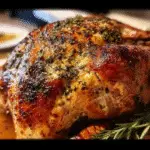
Garlic Herb Butter Roast Turkey
Ingredients
- 2.5 – 3 kg / 5-6 lb single turkey breast , skin on, bone in (Note 1), NOT BRINED
- 1/2 tsp salt
- Black pepper
- Small bunch of fresh herbs – 4 rosemary sprigs , 8 sprigs sage, 10 thyme sprigs
- 12 garlic cloves
Butter:
- 150 g / 5 oz (10 tbsp) unsalted butter, softened
- 1 1/4 tsp table salt or 1 1/2 tsp kosher salt
- 1/2 tsp black pepper
- 4 large garlic cloves , minced
- 1 tbsp finely chopped sage , fresh
- 1 tbsp finely chopped rosemary , fresh
- 1 tbsp fresh thyme leaves , fresh
- 1 tbsp finely chopped parsley leaves , fresh
Instructions
-
Remove fridge chill: Take turkey out of the fridge 45 minutes before cooking (or 30 minutes if it’s super hot where you are).
-
Preheat oven to 200C / 390F (all oven types). Put rack in the lower middle position. (Note 3)
-
Place garlic and bunch of herbs in the middle of a baking dish. (Note 4)
-
Butter: Mix Butter ingredients together.
-
Loosen skin: Use an upside teaspoon to help loosen the skin from the turkey flesh (easiest to go under the paper thin layer under the surface skin). Video helpful here.
-
Smear butter under skin: Use about 2/3 of the butter, and smear it under the skin on the top half of the breast. Best to smear using hands under the skin (not on surface), to ensure it spreads as evenly as possible.
-
Turn turkey upside down. Reserve about 2 tbsp butter for the surface, smear the rest on the underside.
-
Place turkey in pan on the herbs, skin side up. Now smear skin with remaining butter – you don’t want much on the skin because the herb bits burn.
-
STOP HERE for make ahead option – the turkey can be left like this for up to 24 hours. Remove from fridge 45 minutes before serving then proceed.
Roasting:
-
Sprinkle top and sides of breast with salt and pepper all over. Place turkey in oven, turn DOWN to 180C/350F.
-
Roast for 1 hr 30 minutes, basting all over every 30 minutes. (Note 5)
-
COOK TIME / INTERNAL TEMPERATURE: The turkey is cooked when the meat thermometer inserted at the thickest part is 74C/165F. I check in several places. Allow 15 minutes per 500g/1 lb of turkey. My 2.8 kg / 5.5lb bone in turkey took 1 hr 40 minutes.
-
COVER turkey with foil when it becomes golden to your taste, at any point during the cook time (1 hr 15 minutes for me).
-
Rest – Remove turkey from pan and place on serving plate. Cover loosely with foil and rest for 15 to 20 minutes before carving.
Butter Sauce:
-
The pan will have melted butter and roasting juices. Remove herbs and garlic, squeezing out juices. Pour sauce into jug, serve with turkey.
Shopping Tips
When shopping for ingredients, consider visiting local farmers’ markets for the freshest produce and herbs. Seasonal availability can affect quality; for example, fresh herbs are typically at their best in spring and summer. For the turkey, look for options that are hormone-free and antibiotic-free, which can provide a cleaner flavor and is often considered a healthier choice.
For butter, choose high-quality brands that use cream as their only ingredient. If you have the time, you can even make your own compound butter by mixing in the herbs and garlic, which allows for customization of flavors.
Substitutions and Alternatives
If you have dietary restrictions, there are several substitutions you can consider. For instance, if you’re lactose intolerant, you can replace the unsalted butter with a vegan butter alternative or even olive oil, though the flavor will be different. For those avoiding garlic, consider using shallots or garlic-infused oil for a milder flavor.
If you can’t find fresh herbs, you could use dried herbs, but remember that dried herbs are more potent, so use about one-third of the amount specified for fresh herbs. Additionally, if you’re looking to save costs, you can often find turkey breast on sale around holidays, making it a budget-friendly option.
Finally, when storing your ingredients, keep fresh herbs wrapped in a damp paper towel inside a plastic bag in the refrigerator to prolong freshness. Garlic can be stored in a cool, dark place, while butter should be kept in the fridge until you’re ready to use it.
By selecting quality ingredients and understanding their role in the recipe, you set the stage for a memorable garlic herb butter roast turkey that will leave everyone asking for seconds!
Detailed Step-by-Step garlic herb butter Cooking Instructions
Now that we’ve gathered our ingredients, it’s time to embark on the journey of creating a mouthwatering garlic herb butter roast turkey. This process is not only about cooking; it’s about creating a festive experience that your family will cherish. Follow these detailed instructions to ensure your turkey turns out beautifully.
Preparation Steps
- Preheat your oven: Start by preheating your oven to 180°C (350°F). A properly preheated oven is crucial for even cooking, ensuring that your turkey cooks thoroughly without drying out.
- Prepare the turkey: Remove the turkey breast from its packaging and pat it dry with paper towels. This step is essential as drying the skin will help it become crispy. Look for any leftover feathers or bits of innards, and remove them if necessary.
- Season the turkey: Sprinkle the turkey breast generously with salt and black pepper, both inside the cavity and on the skin. This will enhance the flavor of the turkey and create a delicious crust.
- Make the garlic herb butter: In a mixing bowl, combine the softened butter with the minced garlic, chopped sage, rosemary, thyme, parsley, and the additional salt and pepper. Use a fork to mix the ingredients until well combined. It’s okay if it looks a bit rustic; the flavor will be incredible!
- Loosen the skin: Using your fingers, gently separate the skin from the meat of the turkey breast. Be careful not to tear the skin. This step is crucial as it creates a pocket for the garlic herb butter to seep into, infusing flavor into the meat.
- Apply the garlic herb butter: Take about two-thirds of the garlic herb butter and spread it under the skin using your fingers. Make sure to distribute it evenly across the breast. Any remaining butter can be spread over the skin. This step is where the magic happens!
Cooking Process
- Prepare the herbs: Take your fresh herb sprigs—rosemary, sage, and thyme—and place them in the cavity of the turkey. This will impart additional flavor as the turkey roasts.
- Roasting: Place the turkey breast on a roasting rack in a roasting pan. This allows airflow all around the bird, promoting even cooking. Insert the pan into the preheated oven and roast for 30 minutes. Keep an eye on it; you want the skin to turn golden brown.
- Check the temperature: After 30 minutes, use a meat thermometer to check the internal temperature. The turkey should reach an internal temperature of 74°C (165°F) at the thickest part of the breast. If it isn’t quite there yet, continue roasting and check every 10 minutes.
- Baste the turkey: Every 15 minutes, baste the turkey with the juices that collect in the bottom of the pan. This step keeps the meat moist and flavorful.
- Rest the turkey: Once the turkey reaches the right temperature, remove it from the oven and let it rest for at least 20-30 minutes. This resting period allows the juices to redistribute, leading to a juicier bird.
Final Assembly
- Carving: When ready to carve, use a sharp knife and a sturdy cutting board. Slice the turkey breast against the grain for tender pieces. I love to serve it with a drizzle of the pan juices for extra flavor!
- Serving: Present your beautifully roasted turkey on a platter, garnished with additional herbs for a lovely touch. Pair with your favorite sides, and watch as your family gathers around, drawn in by the aromatic scent of garlic herb butter.
- Storing leftovers: If you have any turkey left, let it cool completely before storing it in an airtight container in the refrigerator. Enjoy it in sandwiches, salads, or even soups the next day!
Throughout this cooking process, remember that cooking is as much about intuition as it is about following recipes. Don’t be afraid to trust your instincts and make adjustments as necessary. With these detailed steps, you’ll create a stunning garlic herb butter roast turkey that’s sure to impress your guests and become a beloved family tradition!
Professional Tips and Techniques for garlic herb butter
When it comes to preparing a succulent roast turkey, few things can elevate the dish like the rich and aromatic flavor of garlic herb butter. This compound butter infuses the turkey with moisture and a delightful herbaceous zing that keeps it juicy and flavorful. However, mastering the art of garlic herb butter roast turkey requires some insider knowledge and techniques. Here, I’ll share my professional tips and techniques to ensure your turkey turns out perfect every time.
Professional Techniques
First and foremost, understanding the science behind the cooking process is crucial. When you use garlic herb butter, you’re not just adding flavor; you’re also enhancing the moisture content of the meat. The butter melts during cooking, basting the turkey from the inside out. For optimal results, you should apply the garlic herb butter under the skin of the turkey. This method allows the flavors to penetrate the meat more effectively.
To do this, gently loosen the skin from the turkey breast using your fingers or a spoon, being careful not to tear it. Once you have a pocket, generously insert the garlic herb butter into this cavity. The remaining butter can be slathered over the skin to create a crispy, golden exterior. A tip I learned from a culinary class is to always season the cavity of the turkey with salt and pepper before placing it in the oven. This step enhances the overall flavor profile.
Moreover, the cooking temperature is vital. I recommend starting your turkey at a high temperature of about 425°F (220°C) for the first 30 minutes to get that beautiful browning, and then reducing it to 325°F (165°C) for the remainder of the cooking time. This dual-temperature approach helps to create a crisp skin while ensuring the meat cooks evenly.
Troubleshooting Guide
Even the most seasoned cooks encounter issues from time to time. One common problem is dry turkey. If your turkey turns out dry, it’s likely due to overcooking. Using a meat thermometer can help you avoid this pitfall. The turkey is done when the internal temperature reaches 165°F (74°C) in the thickest part of the breast, and a little less in the thighs. Remember that the turkey will continue to cook slightly after being removed from the oven due to carryover cooking.
If you find that your turkey is browning too quickly, cover it loosely with aluminum foil to prevent burning. This will allow the turkey to continue cooking without the skin becoming overly dark.
Presentation Tips
After all that hard work, the presentation of your roast turkey is the final touch that can impress your guests. Once the turkey is done, allow it to rest for at least 20-30 minutes before carving. This resting period is essential as it allows the juices to redistribute throughout the meat. For a beautiful presentation, carve the turkey on a large wooden cutting board, and consider garnishing it with fresh herbs, such as rosemary and thyme, or even seasonal fruits like cranberries and oranges for a pop of color.
As for wine pairings, a nice Chardonnay complements the richness of the garlic herb butter beautifully. Its acidity cuts through the fat, providing a refreshing balance. Alternatively, a Pinot Noir adds a lovely fruity note that pairs well with the savory flavors of the turkey. If you prefer non-alcoholic options, consider a sparkling cider or a herb-infused lemonade to echo the fresh herbs used in the butter.
Finally, if you’re planning to serve this dish for a large gathering, consider making extra garlic herb butter ahead of time and freezing it in small portions. This way, you can easily infuse any poultry or even vegetables with that delightful garlic-herb flavor whenever you need a quick meal solution.
Creative Variations and Adaptations of garlic herb butter
One of the most exciting aspects of cooking is the ability to experiment and create variations on classic recipes. The garlic herb butter roast turkey is no different. While the traditional recipe is fantastic, there are plenty of creative variations and adaptations that can cater to different tastes and dietary needs.
Seasonal Variations
As the seasons change, so do the ingredients available to us. This gives you the perfect opportunity to adapt your garlic herb butter to include seasonal herbs and vegetables. For instance, in the fall, consider adding sage and thyme to your garlic herb butter. These herbs are classic pairings with turkey and can provide a warm, earthy flavor that resonates with the season. In the spring, fresh herbs like dill and parsley can bring a light and zesty element to your turkey.
Moreover, for a Thanksgiving twist, you can incorporate cranberry or orange zest into your garlic herb butter. This adds a refreshing sweetness that balances the savory notes of the turkey beautifully. Using seasonal ingredients not only enhances the flavor but also creates a connection to the time of year, making your meal more special.
Dietary Adaptations
In today’s culinary world, accommodating dietary restrictions is key to ensuring everyone enjoys the feast. If you’re looking for a keto-friendly version of your garlic herb butter roast turkey, you can easily make it by using unsalted butter mixed with fresh herbs and garlic, just as you normally would. For those following a vegan diet, consider substituting the butter with a plant-based alternative, such as vegan margarine or coconut oil, ensuring that it is well-flavored with garlic and herbs. You might also experiment with nutritional yeast to add a cheesy, savory note that mimics the richness of butter.
For gluten-sensitive guests, rejoice! Turkey is naturally gluten-free, but ensure that all your accompaniments, from stuffing to gravy, are also gluten-free to create a fully inclusive meal. Using gluten-free broth or stock in your gravy will help maintain that delicious flavor without compromising dietary needs.
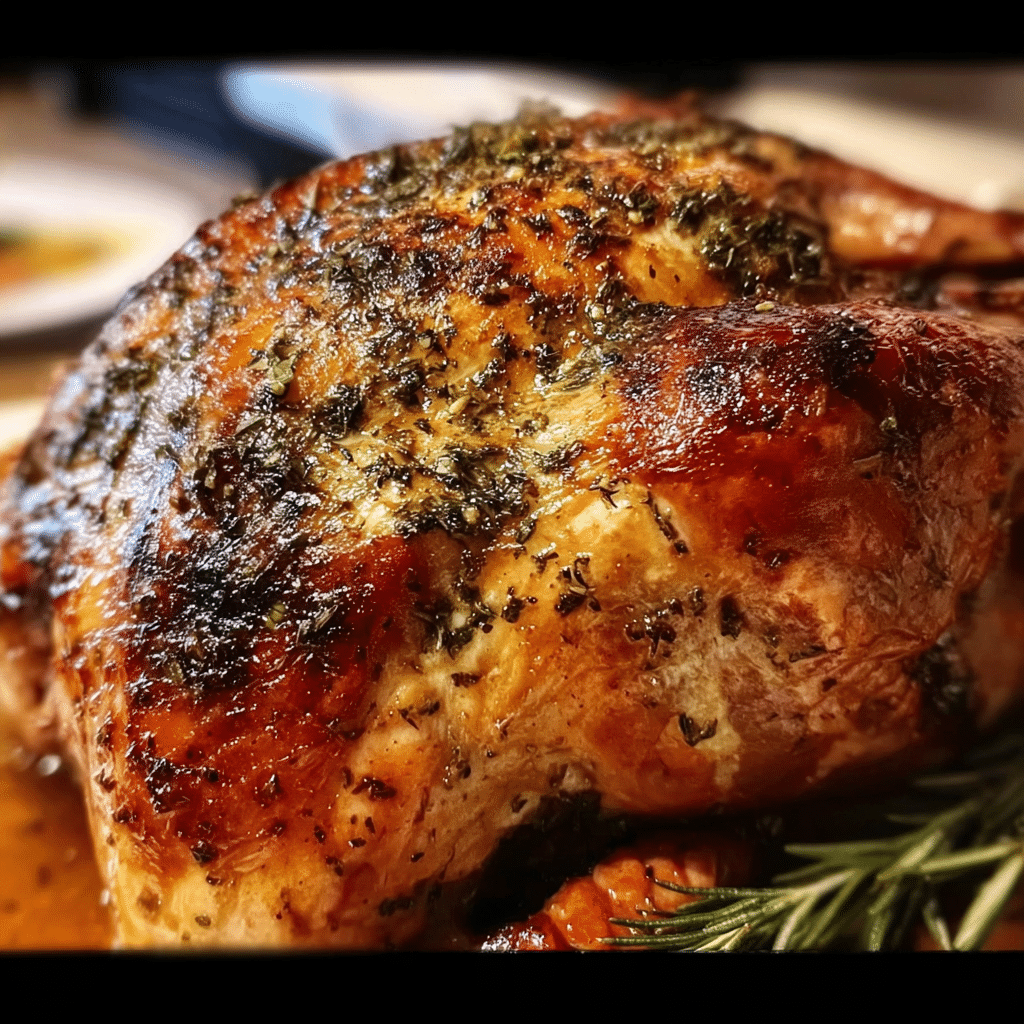
Creative Twists
Feeling adventurous? Consider international flavors to give your garlic herb butter roast turkey an exciting twist. For example, you could infuse your butter with Moroccan spices such as cumin, coriander, and cinnamon, creating a unique flavor profile that transports your taste buds on a journey. Alternatively, a Thai-inspired version could incorporate lemongrass and ginger, providing a fresh and zesty flavor that’s sure to wow your guests.
When it comes to cooking methods, don’t feel confined to the oven. You can also use a slow cooker or even an air fryer for your roast turkey. The slow cooker will yield a tender and flavorful turkey, while the air fryer can give you that crispy skin without the long cooking time. Each method will bring out different textures and flavors, allowing you to enjoy your garlic herb butter turkey in new ways.
Lastly, let’s not forget about leftovers. If you find yourself with extra turkey, don’t let it go to waste! Shred the turkey and mix it with a bit of the leftover garlic herb butter for delicious sandwiches, or toss it into a salad with mixed greens, cranberries, and pecans for a delightful post-holiday meal. The possibilities are endless, and your creativity can transform your garlic herb butter roast turkey into a variety of delicious dishes!
Storage, Reheating, and Meal Prep for garlic herb butter
When it comes to preparing a delicious garlic herb butter roast turkey, one of the most crucial aspects to consider is how to store, reheat, and even meal prep your garlic herb butter. This rich and flavorful concoction not only elevates the turkey but can also be a game changer for many other dishes. Let’s dive deep into the best practices for ensuring that your garlic herb butter remains fresh and delicious, making your culinary efforts worthwhile.
Short-term Storage
After you’ve prepared your garlic herb butter, it’s essential to store it properly to maintain its freshness. If you’re planning to use it within a few days, the refrigerator is your best bet. Transfer your garlic herb butter into an airtight container. This prevents exposure to air, which can lead to oxidation and spoilage. If you’ve made a large batch, consider portioning it into smaller containers or even ice cube trays. This way, you can easily grab just the right amount whenever you need it.
For optimal refrigerator storage, the butter can last about one week. Make sure to label your containers with the date, so you can keep track of its freshness. When you’re ready to use the stored garlic herb butter, simply take it out of the fridge and allow it to soften at room temperature for a few minutes before applying it to your turkey or other dishes.
Freezing and Long-term Storage
If you want to extend the life of your garlic herb butter beyond a week, freezing is a fantastic option. Garlic herb butter can be frozen for up to six months without losing its flavor or texture. To freeze, scoop the butter into an ice cube tray or silicone molds. Once frozen, pop out the cubes and transfer them to a zip-top freezer bag, removing as much air as possible before sealing. This method not only saves space but also allows you to thaw only what you need for your cooking adventures.
Another great method for freezing is to wrap the garlic herb butter in parchment paper or plastic wrap, then place it in a freezer-safe container. Don’t forget to label it with the date and contents. When you’re ready to use your frozen garlic herb butter, simply remove the desired amount and let it thaw in the refrigerator overnight. You can also defrost it in the microwave, but be cautious to use the defrost setting to prevent melting.
Reheating Best Practices
Reheating garlic herb butter doesn’t have to compromise its quality. If you’ve stored your butter in the refrigerator or freezer, the key is to reheat it gently. For refrigerated butter, you can simply take the required amount, place it in a small saucepan over low heat, and stir until melted. This method helps retain the aromatic qualities of the garlic and herbs without burning them.
For frozen garlic herb butter, it’s best to thaw it in the refrigerator before reheating. However, if you’re in a hurry, placing the frozen cube in a warm skillet over low heat can do the trick. Just be sure to keep the heat low to avoid cooking the garlic too quickly, which can result in a bitter taste. The goal is to gently melt it while keeping the flavors intact.
Meal prepping is another excellent way to use garlic herb butter effectively. If you know you’ll be cooking multiple times during the week, prepare a larger batch of garlic herb butter at once. Portion it out into smaller servings and store them appropriately as described above. This not only saves time but ensures you always have a flavorful addition ready to elevate any dish.
Food safety is paramount when it comes to storing garlic herb butter. Always use clean utensils when scooping out the butter to avoid introducing bacteria. If you notice any off smells or discoloration, it’s best to err on the side of caution and discard it. Proper storage and handling can extend the shelf life of your garlic herb butter significantly, allowing you to enjoy its robust flavors without worry.
In summary, understanding the best practices for storing, reheating, and meal prepping garlic herb butter ensures that it remains a delightful addition to your culinary repertoire. From short-term refrigeration to long-term freezing methods, these tips will help you enjoy your flavorful creation for weeks to come. So go ahead, prepare that garlic herb butter, and savor the deliciousness it brings to your roast turkey and beyond!
Nutritional Benefits and Health Information
When indulging in a delicious garlic herb butter roast turkey, it’s not just about the flavors and aromas; it’s also about understanding the nutritional benefits that come with this delightful dish. The ingredients that make up garlic herb butter are more than just flavorful; they each bring their unique health benefits to the table.
Nutritional Profile
Garlic herb butter typically contains a blend of butter, garlic, and various herbs like parsley, thyme, and rosemary. The base ingredient, butter, is high in calories, with approximately 100 calories per tablespoon. However, it also provides essential fats that are important for energy and nutrient absorption. The garlic, known not only for its potent flavor but also for its health benefits, contributes minimal calories while offering a plethora of nutrients, including vitamin C, vitamin B6, and manganese.
When we incorporate herbs into our garlic herb butter, we’re adding more than just flavor. Fresh herbs are often rich in vitamins and minerals. For instance, parsley is a great source of vitamin K, vitamin C, and iron, while rosemary is known for its antioxidant properties. These ingredients together create a balanced profile that enhances both taste and nutrition.
Health Benefits
The health benefits associated with garlic are numerous. It’s renowned for its ability to boost the immune system, reduce blood pressure, and improve cholesterol levels. Allicin, the active compound in garlic, is credited with these benefits, making it a powerful addition to your diet. Additionally, the antioxidants found in garlic and herbs can combat oxidative stress in the body, potentially reducing the risk of chronic diseases.
Furthermore, the healthy fats present in butter, when consumed in moderation, can contribute to heart health. The key is ensuring that our consumption aligns with dietary guidelines. While garlic herb butter adds wonderful flavors to meals, it’s essential to be mindful of portion sizes to maintain a balanced diet.
Dietary Considerations
For those following specific dietary plans, garlic herb butter can fit into a variety of lifestyles. For instance, it can be used in moderation in ketogenic diets due to its high-fat content and low carbohydrate presence. However, if you’re following a vegan or dairy-free diet, you can easily substitute traditional butter with plant-based alternatives like coconut oil or vegan butter. These substitutes maintain the integrity of the recipe while catering to dietary restrictions.
In terms of allergens, garlic herb butter is generally safe for most people, but individuals with dairy allergies should be cautious. Always read labels on commercial butter products, as they may contain traces of allergens. Preparing your garlic herb butter at home allows you to control the ingredients and avoid cross-contamination.
When comparing garlic herb butter with similar dishes, it’s interesting to note how it stacks up. For example, herb-infused oils may provide a lighter alternative, but they often lack the richness that butter brings to a dish. Conversely, cream-based sauces can be higher in calories and fat, making garlic herb butter a more balanced choice when used mindfully.
For those looking to make healthier modifications, consider reducing the amount of butter in your garlic herb butter and replacing it with olive oil or avocado oil. These oils provide heart-healthy fats and can enhance the dish’s flavor profile. You can also boost the herb content to add more nutrients without significantly increasing calorie counts.
In conclusion, the nutritional benefits of garlic herb butter are significant and multifaceted. Not only does it elevate the flavor of your roast turkey, but it also contributes essential nutrients that can enhance your overall health. Whether you’re enjoying it as part of a special meal or incorporating it into your everyday cooking, understanding its nutritional value allows you to appreciate and enjoy this culinary delight even more.
Frequently Asked Questions About Garlic Herb Butter
Garlic herb butter roast turkey breast
Garlic herb butter roast turkey breast is a flavorful and moist dish that is perfect for holiday gatherings or family dinners. To prepare this dish, you’ll want to start by blending softened butter with minced garlic, fresh herbs like rosemary and thyme, salt, and pepper. Once the butter mixture is ready, gently lift the skin of the turkey breast and spread the garlic herb butter underneath to infuse the meat with flavor as it cooks. Roast the turkey breast at a high temperature initially to get a crispy skin, then reduce the heat to ensure thorough cooking without drying it out. A meat thermometer is essential here; aim for an internal temperature of 165°F for perfectly cooked turkey.
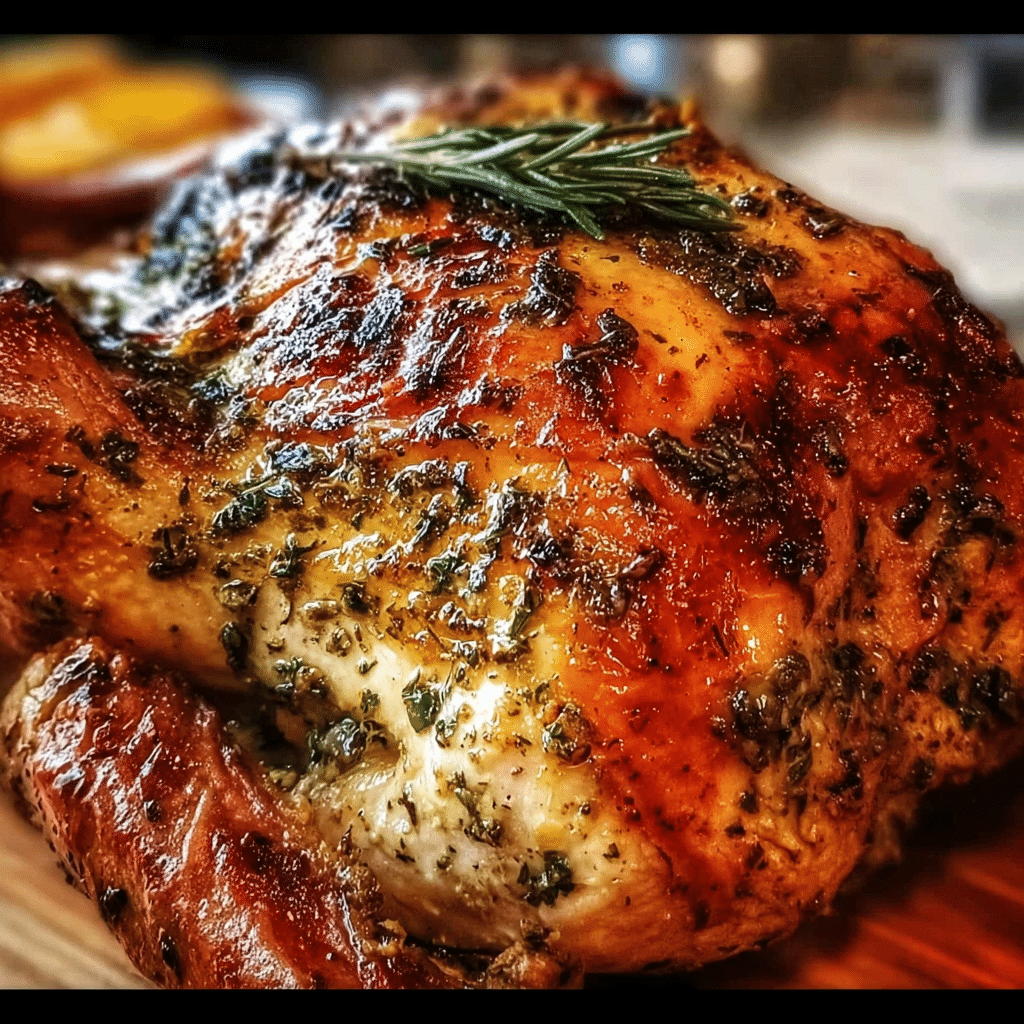
Garlic herb butter roast turkey recipe
To create a delicious garlic herb butter roast turkey, start by creating the herb butter by mixing softened butter with minced garlic, chopped fresh herbs like parsley, rosemary, and thyme, along with salt and pepper. Rub this mixture all over the turkey, making sure to coat under the skin for maximum flavor. Preheat your oven to 425°F and roast the turkey for about 20 minutes per pound, basting occasionally with the drippings to keep it moist. For added flavor, you can stuff the cavity with aromatics like onion, lemon, and more herbs. Let the turkey rest for at least 20 minutes before carving to allow the juices to redistribute.
Garlic herb butter roast turkey in oven
Roasting garlic herb butter turkey in the oven is a straightforward process that yields tender and flavorful meat. Begin by preheating your oven to 425°F and preparing your garlic herb butter as mentioned earlier. After applying the butter under the skin and all over the turkey, place it in a roasting pan breast side up. It’s crucial to roast it at a high temperature for the first 30 minutes to achieve a golden brown skin, then lower the temperature to around 350°F to continue cooking evenly. Use a roasting rack if possible to allow heat to circulate around the turkey, ensuring even cooking.
Herb butter for turkey Gordon Ramsay
Gordon Ramsay’s herb butter for turkey is known for its robust flavor and moist results. His recipe typically includes a blend of softened butter with garlic, fresh herbs like sage, thyme, and rosemary, along with a hint of lemon juice for brightness. To apply, gently separate the turkey skin from the meat and smear the herb butter directly onto the meat, which helps to lock in moisture while producing a crispy skin. Ramsay also emphasizes the importance of letting the turkey rest after cooking to keep it juicy. For an extra touch, consider roasting some vegetables alongside your turkey for a complete meal.
Garlic herb turkey recipe
A garlic herb turkey recipe combines aromatic flavors with traditional cooking methods for a delightful meal. To make this dish, prepare a herb butter using softened butter, minced garlic, and a mix of fresh or dried herbs like thyme, sage, and parsley. Rub the garlic herb butter all over the turkey, including under the skin, for optimal flavor. Roast the turkey at a temperature of 350°F until the internal temperature reaches 165°F, basting periodically with the pan juices. To enhance the dish, you can add citrus fruits like lemons or oranges to the cavity for an aromatic flavor boost.
Garlic butter turkey breast
Garlic butter turkey breast is a quick and flavorful option for any meal. Begin by mixing softened butter with minced garlic, salt, and pepper, then rub this mixture generously over the turkey breast. For added moisture and flavor, consider marinating the turkey breast in the garlic butter for a few hours or overnight. Roast the turkey breast in a preheated oven at 375°F for about 20 minutes per pound, or until the internal temperature hits 165°F. Pair it with a side of roasted vegetables or mashed potatoes for a complete meal.
Turkey butter rub recipe
A turkey butter rub recipe is a fantastic way to elevate the flavor of your roast turkey. Combine softened butter with spices such as garlic powder, onion powder, smoked paprika, salt, and freshly cracked black pepper. You can also include fresh or dried herbs like thyme or sage for an aromatic touch. Spread the butter mixture all over the turkey, ensuring you get some under the skin for maximum flavor impact. Roast at 325°F to 350°F, basting occasionally, and let the turkey rest before carving to enjoy a juicy and flavorful dish.
Herb butter for turkey with dried herbs
Using dried herbs in your herb butter for turkey is a convenient alternative that still delivers great flavor. Start with softened butter and mix in dried herbs like thyme, rosemary, sage, and garlic powder, along with a pinch of salt and pepper. While fresh herbs are fantastic, dried herbs can provide concentrated flavor and are easier to keep on hand. Apply the herb butter generously both on the skin and under it, and roast your turkey at 350°F until it reaches the proper internal temperature. This method ensures a savory taste that permeates the meat, making for a delicious turkey dinner.
Conclusion: Mastering the Perfect garlic herb butter
Creating the perfect garlic herb butter is more than just following a recipe—it’s about understanding the techniques, ingredients, and cultural significance behind this beloved dish. Throughout this comprehensive guide, we’ve explored everything from the historical origins to modern variations, ensuring you have all the knowledge needed to make this recipe your own.
Whether you’re a beginner cook or an experienced chef, the techniques and tips we’ve shared will help you create a garlic herb butter that’s not only delicious but also meaningful. Remember that cooking is a journey of discovery, and each time you make this dish, you’ll learn something new.
We encourage you to experiment with the variations we’ve discussed, adapt the recipe to your dietary needs, and most importantly, share it with the people you love. Food has the incredible power to bring people together, and Garlic Herb Butter Roast Turkey is the perfect dish to create lasting memories around your dinner table.

